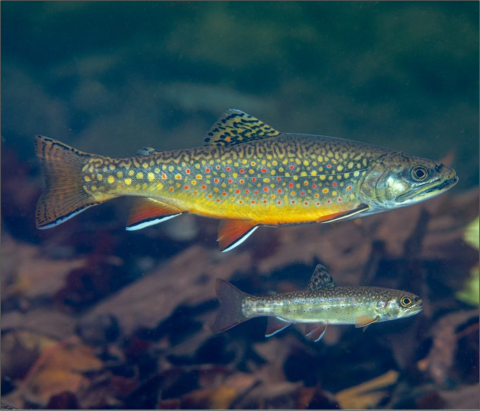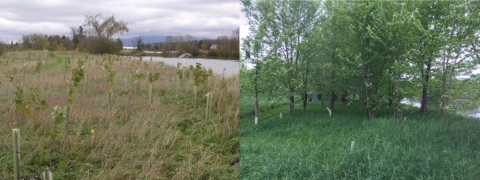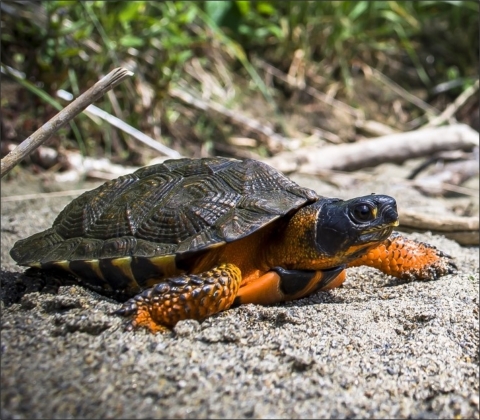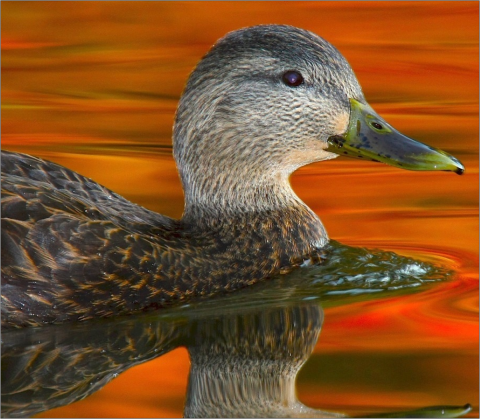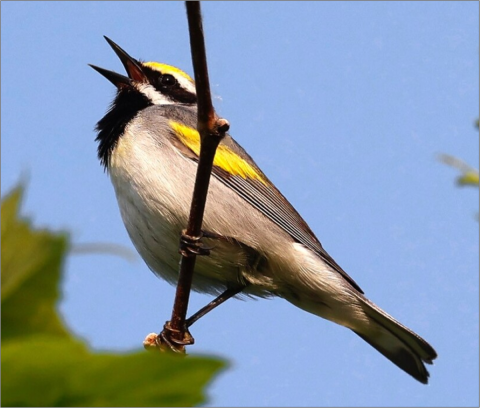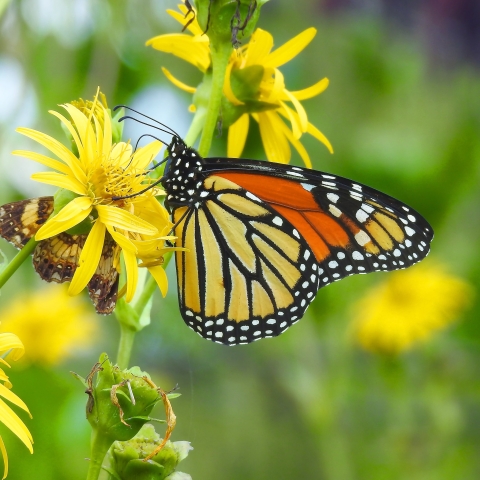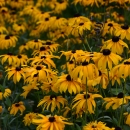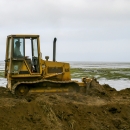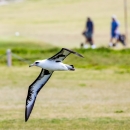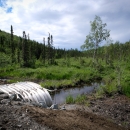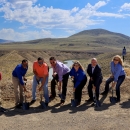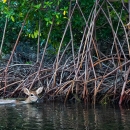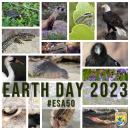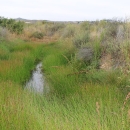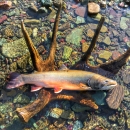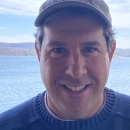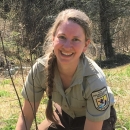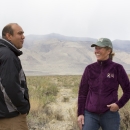States
Maine, Massachusetts, New Hampshire, New York, VermontPartners for Fish and Wildlife
The Partners for Fish and Wildlife Program restores, enhances, and protects important fish and wildlife habitats on private lands through partnerships. We work with private landowners and other partners to restore and manage wetland, forest and upland habitats to benefit migratory birds and fish, pollinators, and federally listed species. The voluntary cost-share program offers a chance to regain some of Vermont's most important natural resources and builds on the strength and interest of committed individuals and organizations to accomplish shared conservation goals. Private landowners provide long-term stewardship of the land and are a key component in all successful restoration projects.
The Vermont Partners Program at the Lake Champlain Fish and Wildlife Conservation Office in Essex Junction helps:
- Restore the habitats of federal trust species on private lands, including tribal, county and municipal lands
- Restore wetlands, riparian riparian
Definition of riparian habitat or riparian areas.
Learn more about riparian , in-stream and native upland habitats - Remove barriers to fish passage fish passage
Fish passage is the ability of fish or other aquatic species to move freely throughout their life to find food, reproduce, and complete their natural migration cycles. Millions of barriers to fish passage across the country are fragmenting habitat and leading to species declines. The U.S. Fish and Wildlife Service's National Fish Passage Program is working to reconnect watersheds to benefit both wildlife and people.
Learn more about fish passage - Leverage funds and resources through efficient state, federal and private partnerships
Partners Program biologists work with local landowners and other conservation partners to provide technical assistance on a broad array of restoration activities. And they help identify, assess, plan, and implement numerous restoration practices such as planting native trees and shrubs, wetland restoration, invasive species invasive species
An invasive species is any plant or animal that has spread or been introduced into a new area where they are, or could, cause harm to the environment, economy, or human, animal, or plant health. Their unwelcome presence can destroy ecosystems and cost millions of dollars.
Learn more about invasive species control, dam removal, and culvert replacements.
For more information contact Chris Smith or visit the North Atlantic Conservation Planning Atlas.
Aquatic Connectivity
Americans derive significant economic, recreational, ecological and health benefits from robust aquatic habitats, including recreational fishing opportunities, favorable water quality and healthy wildlife communities. Improving fish passage, habitat connectivity and habitat stability is a priority for the Lake Champlain FWCO. Over the last 200 years, transportation and milling/manufacturing infrastructure has fragmented watersheds in Vermont and in the Adirondack Region of New York. Dams and undersized road crossings have segmented habitat on every major river system. These barriers impede fish passage to historic spawning waters, coldwater refuge streams and feeding grounds.
Additionally, channelization and channel modifications have changed instream habitats, causing a large number of rivers to be no longer suitable for many native fish and other aquatic organisms. Since Tropical Storm Irene devastated much of the Champlain Valley with record flooding, there has been an urgent need for instream habitat restoration on several streams. In the wake of the road rebuilding, most waterways were left widened, flat and devoid of any fish habitat or riparian (riverbank) buffers.
The Lake Champlain FWCO works to improve and maintain those benefits for Americans by conserving the quantity and quality of habitat for fish and by restoring access to those habitats. We administer habitat improvement and fish passage grants through the National Fish Passage Program and National Fish Habitat Partnership. The National Fish Passage Program provides funds to landowners, agencies and organizations to remove barriers to fish passage and allow fish movement within river systems, wetlands and coastal areas. Additionally, funds are provided for projects that will reduce impacts of flooding by correcting improperly designed road crossings, and ineffective culverts or other storm water abatement and control structures. Fish Habitat Partnerships also offer landowners, governments, and organizations help in restoring land for fish and wildlife. They help leverage resources and maximize conservation for fish and aquatic ecosystems.
We focus on restoring connectivity among those waters essential to landlocked Atlantic salmon and Eastern brook trout; however, all fish and aquatic organisms benefit from our work. We work with partners to remove dams, install fish passage structures where dams can't be removed, replace undersized culverts and bridges with structures that will allow fish to move up and downstream. These new structures are also designed to be resilient to future floods. We also restore and stabilize in-stream habitat to insure those important areas remain viable for fish, despite fluctuations in climate, such as flooding and high temperatures.
For more information contact Julie Butler or David Minkoff visit Northeast Fish and Aquatic Conservation.
VIDEO - Mill Pond Dam Removal
Aquatic Connectivity Fact Sheet
Riparian Restoration
Stable riverbanks with strong native plant communities, called riparian buffers, are part of a healthy ecosystem and are vital to many fish and wildlife species. Riparian buffers provide important nesting and foraging sites for a host of migratory bird species and contribute to healthy fish habitat through shade and cool water temperatures, biotic inputs, and woody debris. Riparian buffers also reduce sediment and nutrient inputs into our rivers and lakes by filtering and absorbing runoff from residential areas and farms. Priority species such as the wood turtle, monarch butterfly, landlocked Atlantic salmon, and brook trout benefit from riparian habitat restoration projects in Vermont.
The Partners for Fish and Wildlife Program provides financial and technical assistance to design and implement riparian habitat restoration projects in Vermont. USFWS staff work with local partners to conduct site assessments and design restoration plans. Restoration plans are designed to benefit fish and wildlife species and are based on the historic natural community associated with the site’s soils with an emphasis on early successional species that will set the stage for a successful transition to a mature riparian community. On average, the Vermont Partners for Fish and Wildlife Program plants 15,000 native trees and shrubs each year.
All of our projects occur on private land in partnership with willing landowners. Many projects occur on agricultural land in conjunction with USDA Farm Bill programs such as the Conservation Reserve Program (CRP). Our local partners for these projects include the Natural Resource Conservation Service (NRCS), the Farm Service Agency (FSA) and the Vermont Agency of Agriculture Food and Markets (VTAAFM). Outside of the agricultural landscape, we work with many conservation districts, watershed groups, and other non-profit organizations to identify and implement riparian restoration projects.
For more information contact Katie Kain.
VIDEO - All in for Salmon Habitat
Riparian Restoration Fact Sheet
Wetland Restoration
Wetlands are extraordinary, diverse places that provide critical habitat for countless birds, mammals, fish, plants, and invertebrates. From nesting habitat for wood ducks to spawning grounds for northern pike, wetlands are vitally important to many fish and wildlife species. In addition to wildlife habitat, wetlands provide numerous benefits such as storing and slowly releasing floodwater to lessen floods, removing sediment and pollutants from our lakes and rivers, recharging aquifers, and providing tremendous recreation opportunities among other values.
While these important places account for only about five percent of the state of Vermont, their importance is tremendous. Unfortunately over 35 percent of the wetlands in the state have been lost or degraded by efforts to ditch, drain or fill them in. Because of the many functions and values they provide and the extent of degraded wetlands, the Partners for Fish and Wildlife Program works with landowners and other agencies such as the Natural Resources Conservation Service to restore these vital habitats throughout the state.
For more information contact Ryan Crehan.
VIDEO - Restoring Vermont's Wetlands
Wetland Restoration Fact Sheet
Young Forest Management
Throughout the northeast forested habitats are maturing. Many migratory bird species and rare/declining species are dependent on the early successional stages of the northern forest to complete their life history. Through the development of forest management plans and the careful selection of appropriate sites, early successional management can provide critical habitat while increasing forest diversity. Early successional management utilizes a variety of mechanical and manual vegetative manipulation to set back forest succession. The Vermont Partners for Fish and Wildlife Program works with local partners such as Audubon Vermont to complete young forest management in high priority habitat areas.
For more information contact Katie Kain.
Schoolyard Habitat
Purpose
Does your school have an underutilized area that you would like to see restored for wildlife habitat and a place for students to learn about the natural world? Would you like to create an outdoor classroom on your school grounds or a trail or boardwalk to explore a nearby wetland, forest or pond? Would you like to engage your students in a hands-on project?
We can help! The U.S. Fish and Wildlife Service can assist you in designing and implementing a schoolyard habitat/outdoor classroom with your school and may be able to provide funding to make the project happen.
Mission
The mission of the Schoolyard Habitat Program is to get students outside to experience nature. To accomplish this, biologists help schools create natural spaces on school grounds where students can observe, draw, write, think and question. Schoolyard Habitat projects provide habitat for local and migratory wildlife, including songbirds, small mammals, reptiles, amphibians, and insects. In many cases, these habitats also provide a vegetative buffer to nearby streams, lakes and wetlands, reducing pollution reaching these waterways.
Activities
Our office has partnered with several Vermont schools to implement Schoolyard Habitat Projects; these included restoring wetland habitat, building nature trails, creating a native shrub nursery, installing wood duck boxes, removing invasive plants, planting wetland and riparian trees and shrubs, and hands-on ecology lessons. With long-term care from students and teachers, these projects provide students with a powerful example of land conservation and stewardship.
For more Information contact Katie Kain or visit the Schoolyard Habitat Program and Project Guide.
